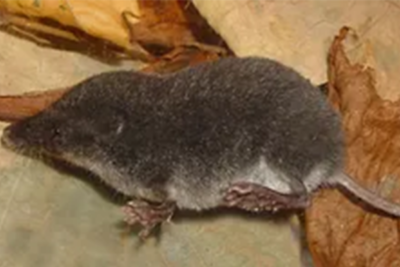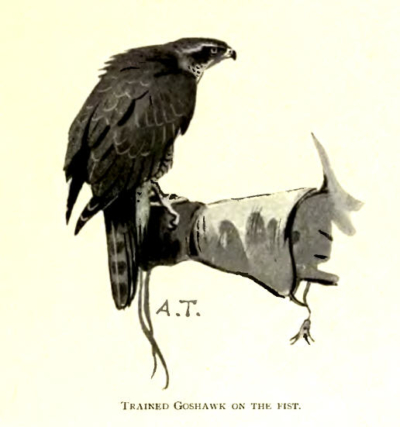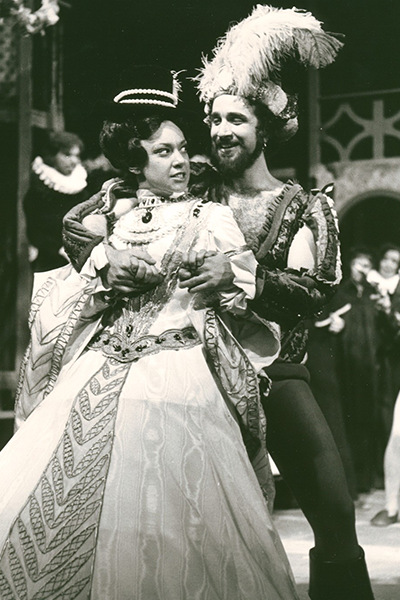
The medieval poet Konrad von Altstetten shown with his falcon, in the embrace of his lover, Codex Manesse
Equinox
Equinox: when our Earth’s circle of the sun is equidistant at the transformations of day and night. It’s the equidistant fulcrum point balancing the two solstices of longest day and night. Because I am by request exploring the Hunter Archetype with you, I hoped to pair the Equinox Balance with the Hunter. How to do that?
One memory and one of Shakespeare’s plays came to mind. I looked up the word Partner. I looked at my notes and new material on Falconry. And finally I understood that Hunting in Pairs is a Role Reversal: the hunter and the target are paired in the game, constantly role reversing until they function almost as one being.
Meaning of the Word Partner (Oxford Languages)
noun
- either of a pair of people engaged together in the same activity.
- any of a number of individuals with interests and investments in a business or enterprise, among whom expenses, profits, and losses are shared.
- plural noun: partners
verb
- to be the partner of: “young farmers who partnered Isabel to the village dance”
- to associate or work together as partners: “we’ve partnered with ,,, in order to ….”
The origin word in Latin is partitio (to partition). This root indicates something that is whole is divided into parts that coordinate. Each one is a Partition in a Partnership.
Surprised into Wonder
In one miraculous moment in my early married life I am bow hunting antelope with my husband on the prairie north of his hometown. The hunting seasons are at harvest time, and we hope to harvest our winter’s meat. The prairie terrain is wide open for very long distances; it looks flat and is called High Plains Desert. Antelope, one of the fastest animals in the world, are perfectly comfortable in that environment. When you get out of your car and walk into the prairie all the variation in the landscape becomes more visible. There are ridges and gullies. Solid rock formations rise among patches of sagebrush and rabbit bush which do not grow in straight lines. We were chasing an antelope buck along a sloping sagebrush ridge, me along the ridge line, the buck and my husband, bow in hand, running along the bottom.

Antelope on the prairie.
My task is to run the ridge line and keep the antelope from escaping over it into a more open prairie. My bow is slung across my back. The morning sun is midway up so the dew on the sage is long and dry, but brushing against the bushes releases the scent as I weave through the open spaces among them. The buck is loping ahead knowing we are not hunting with rifles (no shots taken) and that it can outrun us both if it chooses. My husband knows the area and plans on shooting when the ridge drops into a small brook with a stand of cottonwood trees. The only way out of there is up the ridge and my job is to be there, preventing that escape and shooting my arrow if my husband misses. That is our plan as a pair of hunters, shifting as we run along, and, depending on who can see it, signaling changes in the antelope’s direction to each other.
The ridge narrowed into the cottonwoods, with the buck at the point of our equilateral triangle. The buck stops, looking and wondering. My husband draws his bow, places the arrow. Then a stag rises out of the sagebrush, in the middle of the three of us, shaking a rack of antlers that could have hung every hat in our family’s possession. Giant, ancient in age, proud, and he is focused on my husband.
It is an open season for deer as well. The stag is triple the meat but it would be very tough given the years marked in points on those antlers.
The antelope lopes away while we stand still, caught in wonder at the stag. I feel like kneeling to it.
We didn’t eat either that antelope or that deer that winter. We did fill both our deer and antelope tags during the rifle seasons. We have not yet seen another stag of such magnificence.
Shakespeare’s Taming of the Shrew
In our time this play has come under fire for being about:
- feeding the stereotype of women’s uncontrolled emotions
- a husband’s physical, mental and emotional abuse of a new wife
- forcing a woman into the traditional role of wife and motherhood
- breaking a woman’s spirit to be obedient to her husband
Shakespeare is accused of being a woman hater, misogynist…
These accusations are rooted in not understanding the period of history and culture of Shakespeare’s time. Shakespeare wrote a comedy whose hero, Petruchio, is a hunter, and who tames a wild hawk (Katherine, the heroine) into being a hunting partner. He knows they must become a balanced pair to hunt together.
Let’s pick up a pair of hunting glasses and look at the play from the Elizabethan era’s point of view. The play opens by contrasting two sisters, and listening to various marriage contract proposals for the younger, stereotypically feminine one (fair, virtuous, etc.) Katherine knows about her sister’s duplicity and dissembling and mocks her sweet surface that covers a scheming and selfish heart. Bianca will marry the wealthiest suitor. Katherine is eldest and her father has decreed she must marry first but she won’t settle for any of the suitors. She, perhaps unknowingly, is hunting a real partner. There is no presence or mention of their mother.
Petruchio has come to town to hunt a wife, because with her will come a dowery. Katherine’s father and Petruchio contract Katherine’s marriage before he has met her. Petruchio asks “What dowry shall I have with her to wife?” The answer is half the father’s lands at his death, and 20,000 crowns on the wedding day. Petruchio then offers to give Katherine everything he owns if he dies:
And, for that dowry, I’ll assure her of
Her widowhood, be it that she survive me,
In all my lands and leases whatsoever.
After the contract is signed the play moves to the uproarious first meeting with Kate. Petruchio plays with the descriptions of a shrew. As Elizabethans, we are familiar with shrews. A man with “shrew” behaviors is called a “scold”: sharp tongue, easily annoyed and argumentative. We know the animal shrew is a hunter.
The men in Padua call Katherine a shrew because she is ill-tempered and disagreeable. She will not listen to a man without offering an argument or challenging him. When they meet, Petruchio challenges her: people say about you (shrew description) but I, Petruchio, find you to be (the opposite). She fires back, meeting the challenges, a worthy opponent, a potential hunting partner if tamed (not broken – a hawk with a broken spirit cannot be a partner.)
It is a very lively and funny scene. At the end of this, their first meeting, Petruchio says:
Now, Kate, I am a husband for your turn,
For by this light, whereby I see thy beauty,
Thy beauty that doth make me like thee well,
Thou must be married to no man but me.
For I am born to tame you, Kate,
And bring you from a wild Kate to a Kate
Conformable as other household Kates.
(Shakespeare: Taming of the Shrew Act II, Scene 1)
We may not like the word “conformable” but it is a word about taming: when the horse, the hawk, the dog displays a good “confirmation” it is the best of its breed.
If we don’t know about training a hawk into partnership we interpret each action from our limited viewpoint and misunderstand what is happening. Petruchio tells us his plan:
Thus have I politicly begun my reign,
And ’tis my hope to end successfully.
My falcon now is sharp and passing empty;
And till she stoop she must not be full-gorged,
For then she never looks upon her lure.
Another way I have to man my haggard,
To make her come and know her keeper’s call,
That is, to watch her, as we watch these kites
That bate and beat and will not be obedient.
She eat no meat to-day, nor none shall eat;
Last night she slept not, nor to-night she shall not;
As with the meat, some undeserved fault
I’ll find about the making of the bed;
And here I’ll fling the pillow, there the bolster,
This way the coverlet, another way the sheets:
Ay, and amid this hurly I intend
That all is done in reverend care of her;
And in conclusion she shall watch all night:
And if she chance to nod I’ll rail and brawl
And with the clamour keep her still awake.
This is a way to kill a wife with kindness;
And thus I’ll curb her mad and headstrong humour.
He that knows better how to tame a shrew,
Now let him speak: ’tis charity to show.
Exit

Each thing that happens to Catherine happens when a falcon is tamed and trained to hunt with a partner. The whole household being tossed about is funny because we know hawk houses must be kept very, very clean.
A hawk is a quick-striking opponent. With the falconer, she learns to exercise her skills not against her partner but on his behalf as well as her own. A hawk learns to come to the lure for the rewards that complete the hunt. Katherine’s first lure, like a hawk’s, is food; the final lure is to be able to go to her sister’s wedding. As she and Petruchio travel to the wedding, Petruchio tests their growing alliance with ever greater challenges. Can she keep pace with sudden changes? He makes abrupt and seemingly absurd changes in what he asks of her, even misnaming the very sun and moon; but now she is equal to the challenge.
Be it moon or sun, or what you please, she says,
And if you please to call it a rush-candle
Henceforth I vow it shall be so for me.
Katherine and Petruchio are ready to hunt together at her sister’s wedding. In the final act Petruchio is with Bianca’s suitors, the men of the town who mocked Katherine, and her father. The ladies are gathered elsewhere in the house.
The men mock Petruchio for having a shrew for a wife. Petruchio sets up a bet with these very wealthy men as to who has the most obedient wife. They will prove it by seeing who will come willingly when called. The men bet that Catherine the Shrew will not come. The other women do not come when called. Katherine observes the string of messengers asking the women, and their refusals. She knows something is up. When Petruchio calls Katherine goes immediately. The other women are so amazed they come as well. Once there, Katherine delivers a lecture to the other women about being obedient. It’s a speech many people find distasteful. But we know that Katherine is not the woman she describes as ideal; each image is in stark contrast to who she really is. This hunting pair preys triumphantly upon the wealth foolishly staked by husbands who have not achieved true alliance with their wives. The bonded pair of hunters return to their home much wealthier than when they left.
I would love to attend Taming of a Shrew performed for a large group of falconers and their families, and experience how they recognize what Petruchio is doing, and if they find it funny.
Hunting is Role Reversal
Role Reversal occurs when two people take the role the reverse of that which they normally assume in relation to their partner. Whether hunting the antelope or hunting the suitors’ money, knowing what the other being is thinking leads to a successful hunt.
Role Reversal demands an understanding of the other being’s point of view, not only thought processes and likely behaviors but why those behaviors exist, the underpinning creating them.
Petruchio says in Act I, Scene 1, lines 238-277:
O slanderous world! Kate, like the hazel-twig,
Is straight and slender, and as brown in hue
As hazelnuts, and sweeter than the kernels.
He understands her true nature and asks her to remove her shell. He role-reverses when he requests she come. She role-reverses by responding, and then delivers a lesson to the women who have persecuted her. Petruchio understands fully and sympathizes with what this opportunity means to her; shell off, she partners with him.

Ginny Lynn Safford-Beddington and Roger Holzberg, University of Colorado-Boulder, Taming of the Shrew, directed by Daniel S.P. Yang, 1975.
Exploring the Hunter Archetype
A predator “primarily obtains food by the killing and consuming of other organisms”. (Merriam-Webster) Animal predators prey on other animals, and adapt their behaviors to insure a successful hunt. We’ve just explored two examples, one literally hunting food (antelope) and the other (Shrew) hunting not only money but a masterful put-down of greedy people.
The second definition of Predator is “one who injures or exploits others for personal gain or profit”. A predator drives a truck into a group of prey. A predator destroys the reputation of a competitor to win. These predators do not role-reverse, except to bet on the submissive behavior of the prey. These predators eliminate support structures in order to abuse.
The antelope escapes as the Hunters revere the stag. The Hunter couple takes their winnings in an open bet while giving lessons in behavior. Hunters are paired in the hunt with the prey, constantly role reversing.
Role Reversal demands context awareness, an empathetic understanding of the partner in the dance. Neither partner is dominant. The antelope heads uphill but I am there on the ridge. It heads downhill but my husband is there. The antelope strategizes, we observe and respond; hunters and prey are an equilateral triangle.
A Balanced Earth
This Equinox, when the earth is balanced in her cycle around the sun, think of what you are hunting, and who is your partner in the dance. Partnering is a courtship, a wedding of wills allowing roles to shift as needed to achieve the shared goal.

Photo by Frankie Cordoba on Unsplash
Comments: Thanks for the emails and comments, as always, and special thanks to those choosing to explore the Hunter archetype when it is uncomfortable for you. Your thoughts help guide what we are doing together.






I LOVE the story of the hunt, and the rising of the old buck… I love that I knew you and Charles in your bow hunting days.
And I LOVE your reinterpretation of “Shrew” as an allegory of two spring equinox hunters uniting to form a formidable team, portraying their journey not as one of dominance but of mutual evolution and collaboration and mutual empowerment.